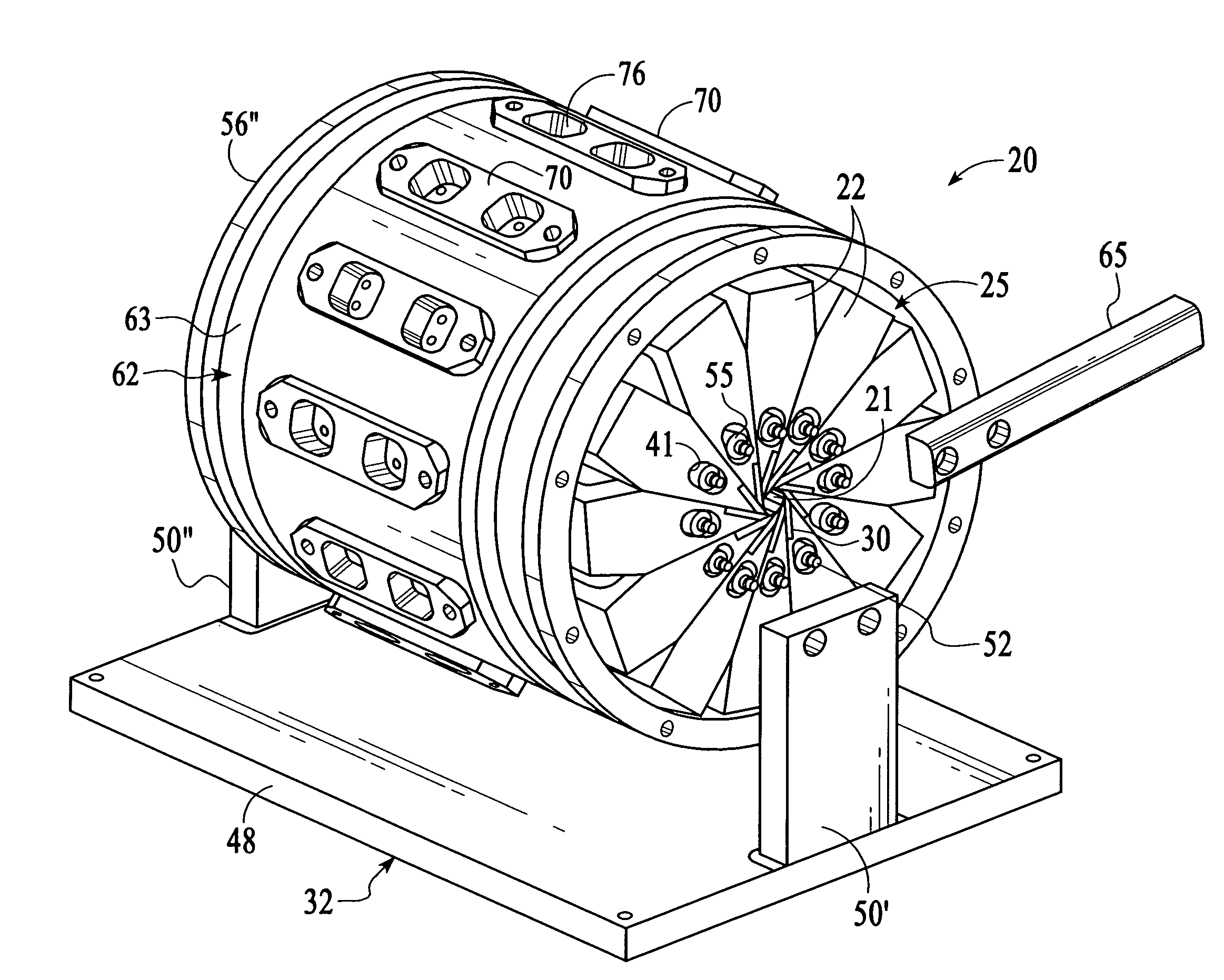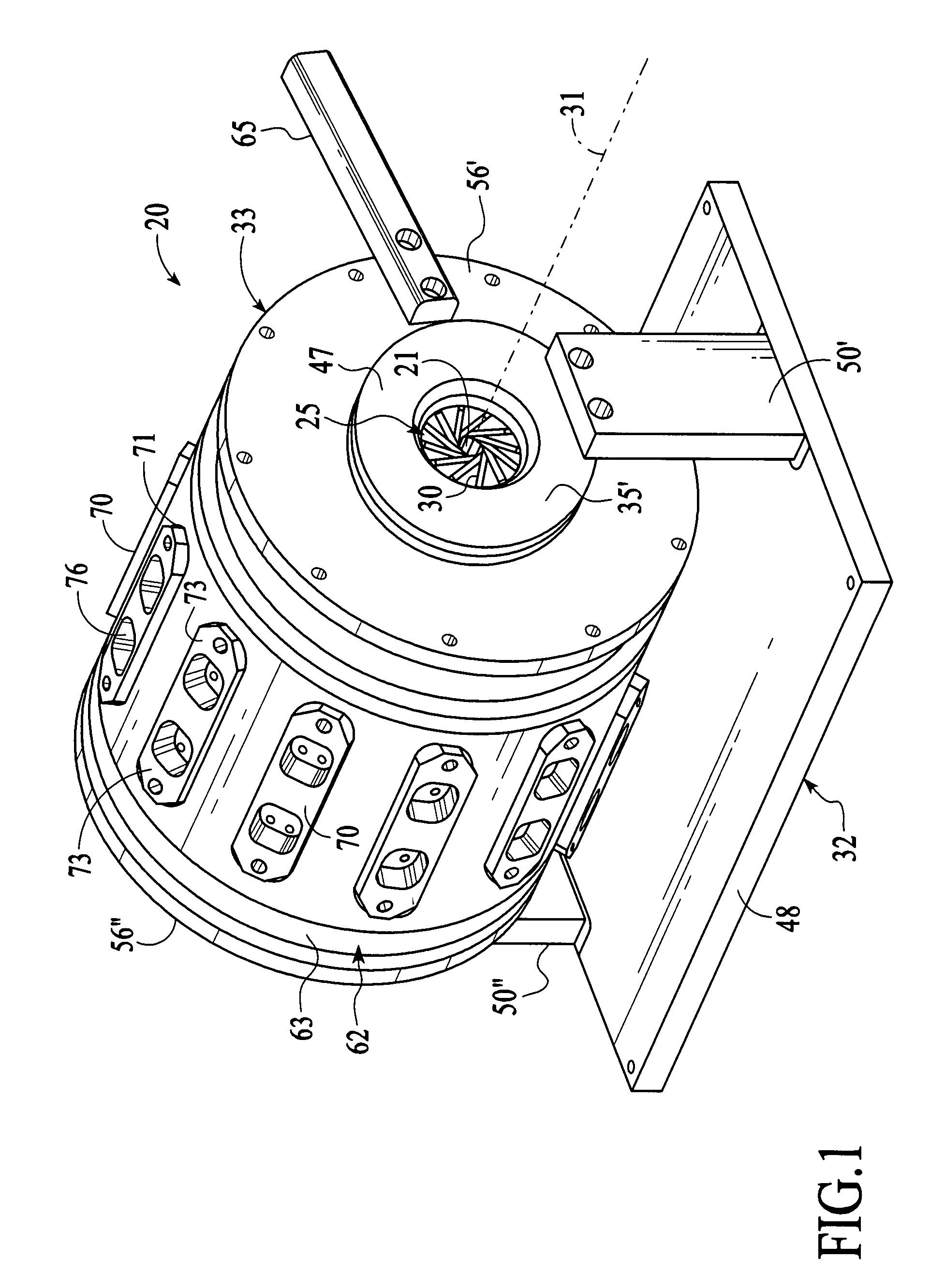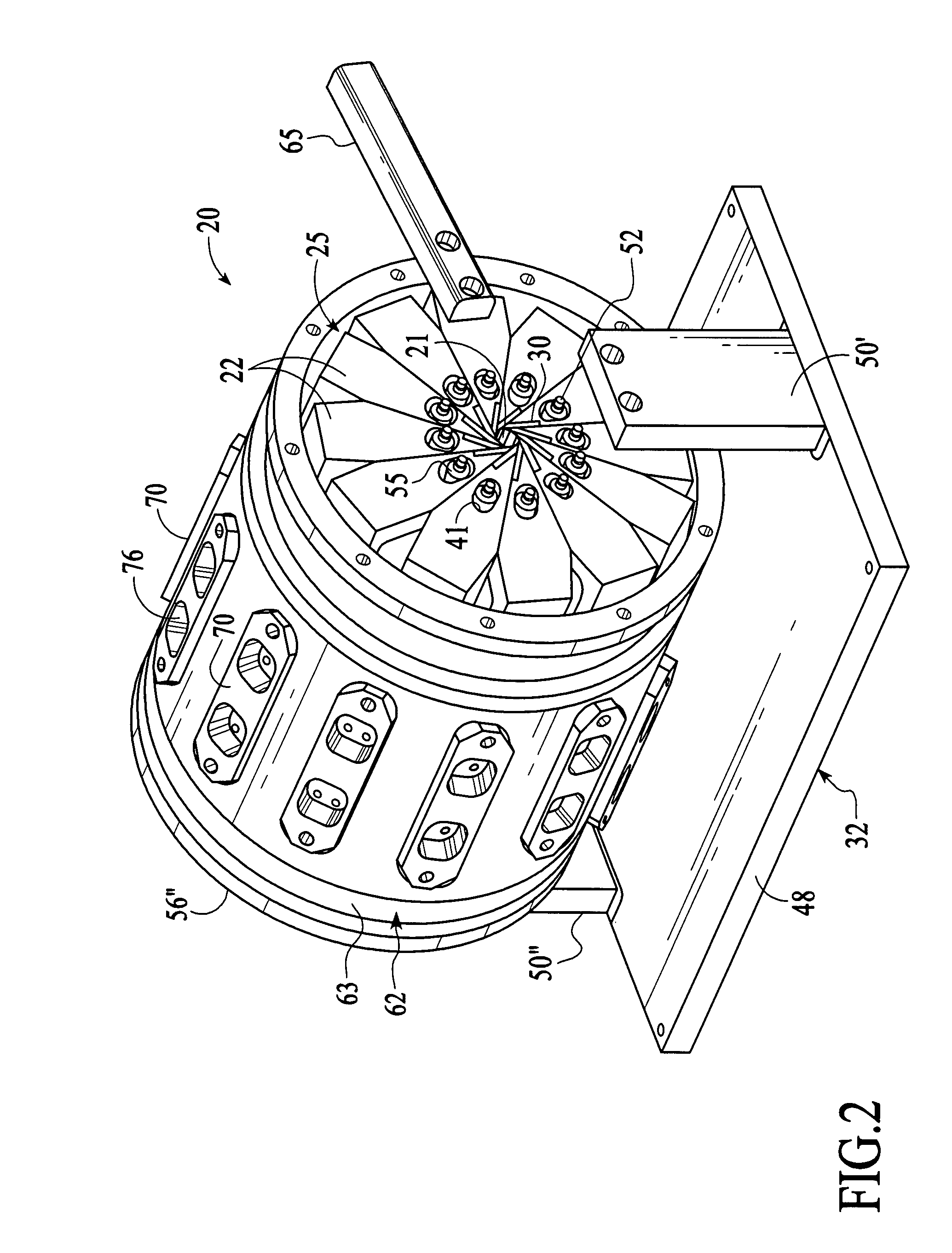Stent crimping system
a crimping system and stent technology, applied in the field of intraluminal devices, can solve the problems of uneven radial crimping force applied to the stent, stents that are not properly crimped, secured or retained to the delivery catheter may slip and be lost, and achieve the effect of increasing reducing the size of the crimp apertur
- Summary
- Abstract
- Description
- Claims
- Application Information
AI Technical Summary
Benefits of technology
Problems solved by technology
Method used
Image
Examples
Embodiment Construction
[0053]While the present invention will be described with reference to a few specific embodiments, the description is illustrative of the invention and is not to be construed as limiting the invention. Various modifications to the present invention can be made to the preferred embodiments by those skilled in the art without departing from the true spirit and scope of the invention as defined by the appended claims. It will be noted here that for a better understanding, like components are designated by like reference numerals throughout the various figures.
[0054]Referring now to FIGS. 1-6, a stent crimping assembly, generally designated 20, is illustrated that defines a crimp aperture 21 for crimping a stent (not shown) from a first diameter (FIG. 4) to a reduced second diameter (FIG. 5). This crimping assembly 20 includes a plurality of movable blades or wedges 22 arranged in an assembly 25 around the crimp aperture 21. Each wedge, as best viewed in FIGS. 3 and 6, include a first si...
PUM
| Property | Measurement | Unit |
|---|---|---|
| Diameter | aaaaa | aaaaa |
| Size | aaaaa | aaaaa |
| Displacement | aaaaa | aaaaa |
Abstract
Description
Claims
Application Information
 Login to View More
Login to View More - R&D
- Intellectual Property
- Life Sciences
- Materials
- Tech Scout
- Unparalleled Data Quality
- Higher Quality Content
- 60% Fewer Hallucinations
Browse by: Latest US Patents, China's latest patents, Technical Efficacy Thesaurus, Application Domain, Technology Topic, Popular Technical Reports.
© 2025 PatSnap. All rights reserved.Legal|Privacy policy|Modern Slavery Act Transparency Statement|Sitemap|About US| Contact US: help@patsnap.com



